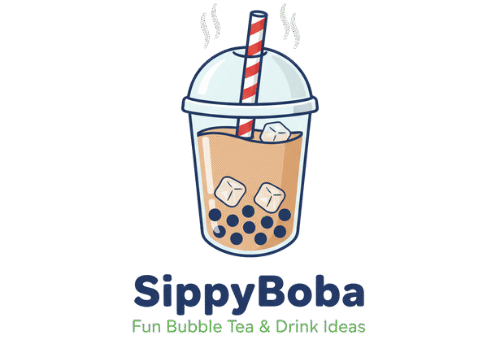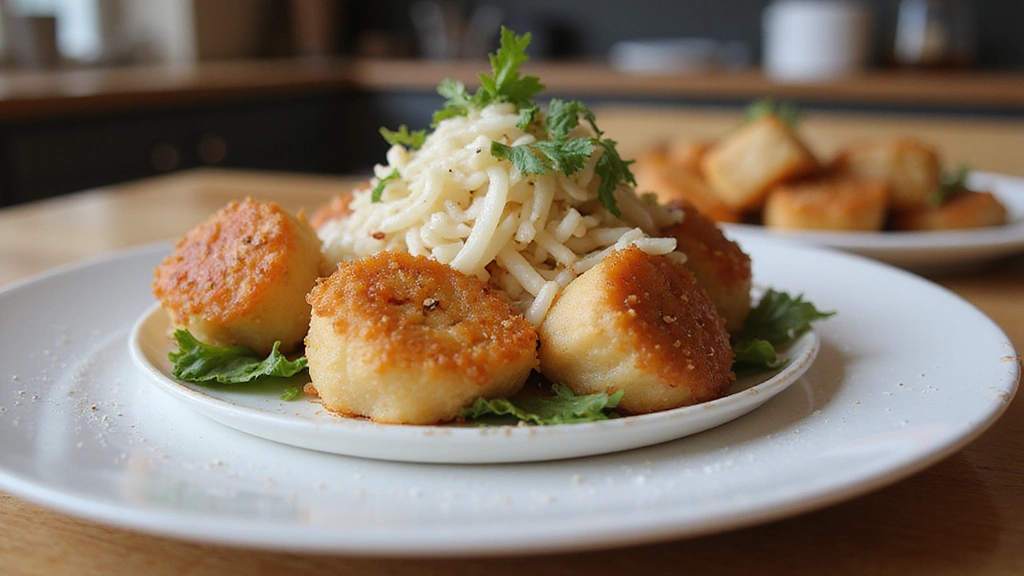Setting up a bubble tea shop is like opening a portal to vibrant flavors and cultural sophistication.
With its unique blend of tea, milk, and tapioca pearls, bubble tea has become a beloved beverage worldwide.
Whether you’re looking to bring a taste of Taiwan to your community or start a trendy new business, this guide will walk you through each step.
From sourcing quality ingredients to mastering the art of bubble tea, you’ll discover the joy of crafting each cup to perfection.
The History and Cultural Significance
• Bubble tea traces its origins to Taiwan in the 1980s, where it was originally created by mixing sweetened tea with chewy tapioca pearls.
• The drink evolved over decades as various flavors and toppings were introduced, eventually becoming the beloved version we know today.
• In Taiwanese culture, bubble tea traditionally appears at casual gatherings and social events, symbolizing hospitality and innovation.
• While many variations exist across different regions, the authentic version maintains a perfect balance of tea and chewy texture that sets it apart from imitations.
Recipe Overview
Nutritional Information (per serving)
Essential Equipment Guide
Boba Tea Shaker: This tool is crucial for achieving the perfect blend of tea and milk, ensuring a smooth and well-mixed drink. A cocktail shaker can serve as a good alternative, as long as it is large enough and seals tightly.
Tapioca Pearl Cooker: Consistent cooking of tapioca pearls is essential for achieving the right texture. A large pot with a strainer insert can work, but a dedicated pearl cooker simplifies the process.
Sealing Machine: For a professional touch, a sealing machine ensures bubble tea stays fresh and prevents spills. An alternative is using reusable lids, but a sealer creates a more authentic experience.
Ingredients
For the Base
|
|
| Amount | Ingredient | Notes |
|---|---|---|
| 2 cups | black tea | brewed strong, cooled |
| 1 cup | milk | adds creaminess |
| 1 cup | ice | chilled, for serving |
Tapioca Pearls
| Amount | Ingredient | Notes |
|---|---|---|
| 1 cup | tapioca pearls | cooked until soft |
| 1 tablespoon | sugar | enhances sweetness |
Sweetener
| Amount | Ingredient | Notes |
|---|---|---|
| 1 cup | simple syrup | adds sweetness |
| 1 teaspoon | vanilla extract | for depth of flavor |
Preparation Methods
Brewing Strong Tea: Use twice the amount of tea leaves for a robust flavor, essential for balancing the sweetness of the drink. Allow the tea to steep for 5-7 minutes before cooling.
Cooking Tapioca Pearls: Boil pearls until they float, then simmer until translucent. This technique ensures the pearls are soft and chewy, avoiding an undercooked center.
Shaking the Tea: Shake vigorously to combine tea and milk until frothy. This creates a well-integrated drink with a smooth texture.
Step 1: Prepare Ingredients

Measure the tea leaves and boil water.
Steep the tea for 5-7 minutes to ensure a strong flavor.
Cool the tea to room temperature before using.
This ensures the tea does not melt the ice, maintaining the drink's temperature.
Step 2: Cook Tapioca Pearls
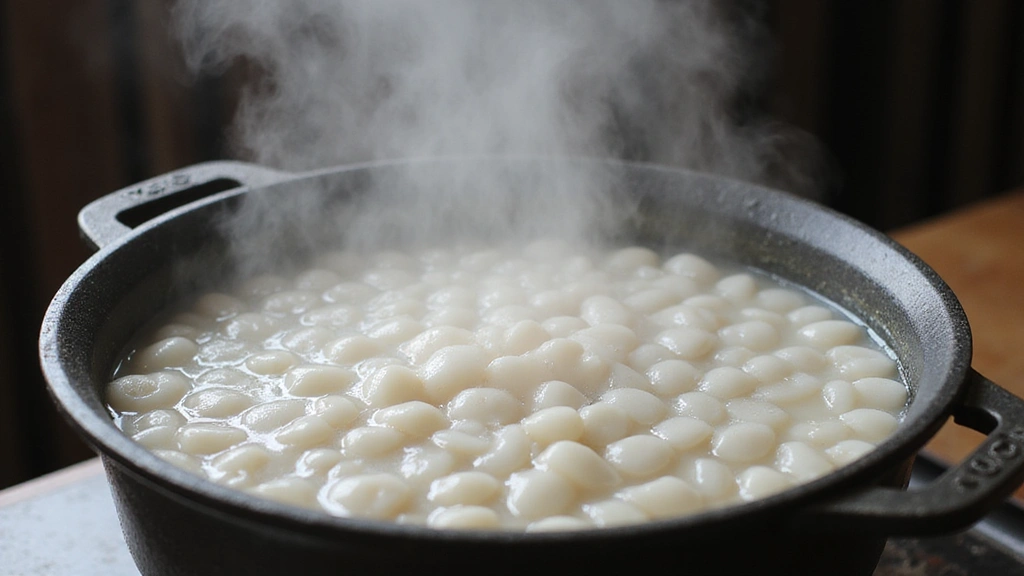
Bring a pot of water to a rolling boil and add tapioca pearls.
Stir occasionally to prevent sticking.
Cook until the pearls are soft and translucent, about 10 minutes.
This ensures the pearls have the perfect chewy texture.
Step 3: Sweeten the Pearls
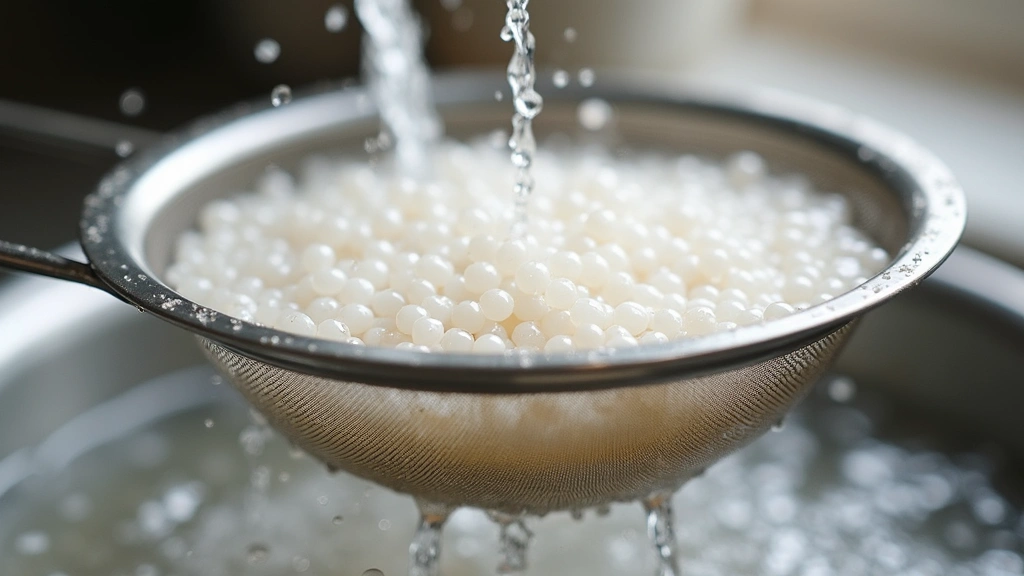
Drain the cooked pearls and rinse with cold water.
Transfer to a bowl and mix with sugar.
Let them sit for 10 minutes to absorb the sweetness.
This step enhances the flavor of the pearls themselves.
Step 4: Mix the Tea Base
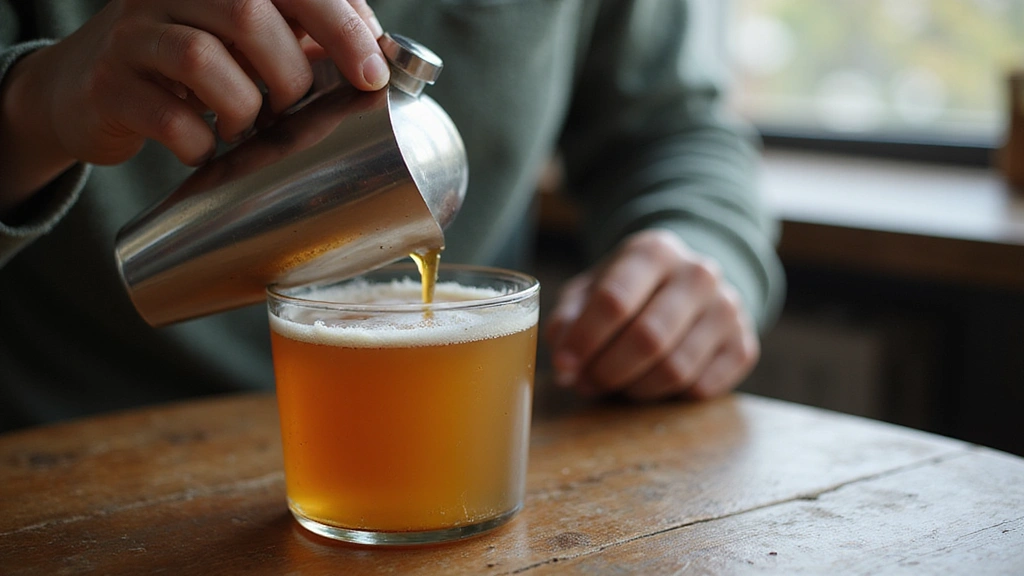
Combine the cooled tea with milk in a shaker.
Add simple syrup and vanilla extract to taste.
Shake vigorously until well mixed and frothy.
This creates a smooth and creamy tea base.
Step 5: Assemble the Drink

Scoop the sweetened tapioca pearls into the bottom of a glass.
Fill the glass with ice cubes to the brim.
Pour the shaken tea mixture over the ice.
This layering creates the iconic bubble tea appearance.
Step 6: Seal the Drink
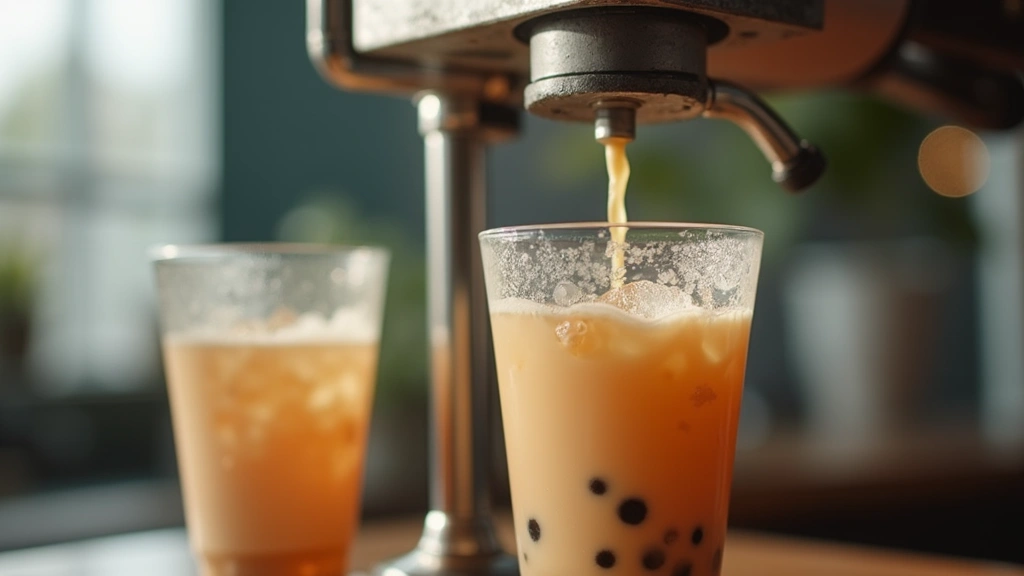
Use a sealing machine to seal the top of the glass if available.
Alternatively, secure with a reusable lid.
This prevents spills and maintains freshness.
A sealed top is characteristic of authentic bubble tea presentation.
Step 7: Serve with a Straw

Provide a wide straw to allow pearls to pass through.
Insert the straw just before serving to keep the drink fresh.
Encourage the customer to stir before sipping.
This ensures an even distribution of flavors with each sip.
Step 8: Final Presentation

Garnish with any additional toppings if desired.
Present on a tray with a napkin for easy handling.
Ensure the drink is visually appealing.
A well-presented drink enhances the customer experience.
Critical Timing and Temperature Guide
Brewing Tea: Steep for 5-7 minutes at 200°F for optimal strength, avoiding bitterness that occurs with oversteeping.
Cooking Pearls: Boil at a rolling boil until they float, then simmer, ensuring they remain chewy and not overcooked.
Cooling Tea: Allow tea to cool to room temperature before mixing, preventing the ice from melting too quickly and diluting the drink.
Pro Tips for How to Set
• Ingredient Selection: Choose high-quality loose-leaf tea and fresh tapioca pearls for the best flavor and texture.
• Preparation Secret: Double-strain the tea to remove any leaves or sediment for a smoother drink.
• Temperature Management: Ensure the tea is fully cooled before mixing with ice to maintain the drink's consistency.
• Texture Enhancement: Cook the pearls just until translucent and soft for the perfect chew.
• Flavor Layering: Use a combination of sweeteners like simple syrup and vanilla extract to create depth.
• Make-Ahead Strategies: Prepare the tea ahead of time and store in the fridge for up to 24 hours without losing flavor.
• Restaurant-Quality Finishing Touches: Seal the cups with a machine for a professional finish.
• Equipment Optimization: Utilize a cocktail shaker for mixing if a dedicated tea shaker isn't available.
Troubleshooting Common Issues
• Tapioca Pearls Too Hard: This issue arises from undercooking. Ensure pearls cook until fully translucent, and soak them in warm sugar syrup to soften.
• Tea Too Bitter: Caused by oversteeping. Use a timer to ensure tea is removed from heat promptly.
• Drink Too Watery: This occurs if ice melts too quickly. Cool the tea completely before adding ice.
• Flavors Unbalanced: Can happen with improper sweetener ratios. Adjust the simple syrup and vanilla extract to taste.
• Pearls Clumping: Prevent by stirring occasionally during cooking and rinsing thoroughly after cooking.
• Sealing Issues: If using a sealing machine, ensure the lip of the glass is dry for a proper seal.
Variations and Regional Differences
• Taiwanese Classic: This version uses a strong black tea base and focuses on the simplicity of the tea and pearls.
• Fruit Flavored Variations: Incorporates fruit purees or flavored syrups for a fruity twist, popular in Western countries.
• Matcha Bubble Tea: Utilizes matcha powder for a green tea version, offering a distinct earthy flavor.
• Thai Bubble Tea: Features Thai tea mix, known for its rich, spiced flavor and vibrant orange color.
Food Science Behind the Recipe
• Emulsification: Shaking the tea, milk, and sweetener creates an emulsion, blending flavors and textures smoothly.
• Gelatinization: Cooking tapioca pearls involves gelatinization, which gives them their characteristic chewy texture.
• Temperature and Flavor Perception: The cooling of the tea affects how its flavors are perceived, with cooler temperatures mellowing bitterness.
Frequently Asked Questions
What's the most common mistake people make when preparing bubble tea? Overcooking or undercooking the tapioca pearls, resulting in an undesirable texture.
Can I use any type of tea for bubble tea? Yes, but stronger teas like black or green are preferred for their robust flavors.
How do I store leftover pearls? Keep them in a sealed container in sugar syrup at room temperature for up to 4 hours.
Can I make bubble tea without a sealing machine? Yes, use reusable lids or serve immediately to prevent spills.
What are some popular toppings besides tapioca pearls? Coconut jelly, popping boba, and grass jelly are popular choices.
How do I prevent the drink from being too sweet? Start with less simple syrup and adjust to taste.
Can I use non-dairy milk? Yes, almond or oat milk are great alternatives for a dairy-free option.
Serving and Presentation Guide
• Traditional Presentation: Serve in a clear plastic cup with a sealed top for an authentic look.
• Modern Twist: Use glass jars with metal straws for a sustainable and trendy presentation.
• Seasonal Decor: Decorate the serving area with seasonal flowers or themed decorations to enhance the experience.
• Interactive Experience: Offer a DIY bar where customers can customize their toppings and sweetness levels.
Conclusion
Opening a bubble tea shop is an exciting venture that combines creativity and cultural appreciation.
By following this guide, you'll be well on your way to serving delicious, authentic bubble tea.
Embrace the process and enjoy the satisfaction of crafting each drink to perfection.
